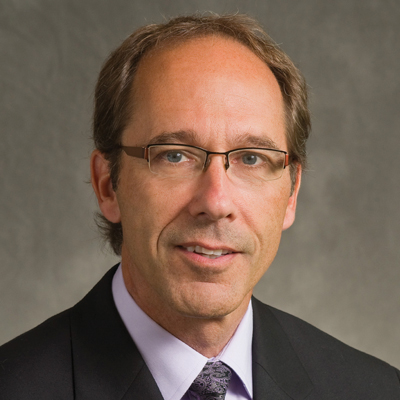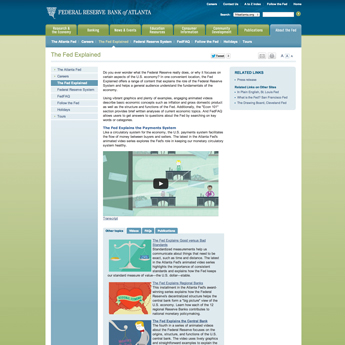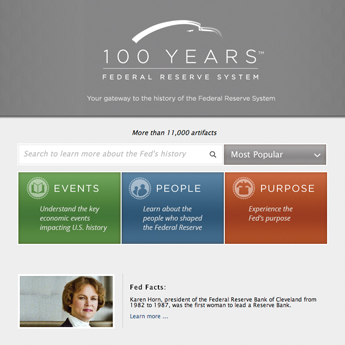The Balance of Power
The Political Fight for an Independent Central Bank, 1790–Present
By Tim Todd
Federal Reserve Bank of Kansas City
Available free at kansascityfed.org
85 pages
In Fed We Trust
Ben Bernanke’s War on the Great Panic; How the Federal Reserve Became the Fourth Branch of Government
By David Wessel
Crown Business
323 pages
On June 3, 2009, Federal Reserve Chairman Ben Bernanke appeared before the U.S. House Budget Committee, where he faced queries about the level of government debt and what it would take for the federal government to balance its budget. At one point, Rep. Jeb Hensarling, R-Texas, laid out the numbers and then suggested three approaches:
Hensarling: Which means perhaps some level of tax increase, spending decrease, or inflating the money supply is going to be necessary?
Bernanke: Relative to that CBO baseline, I mean, it’s evident that either cuts in spending, increases in taxes, will be necessary to stabilize the fiscal position. The Federal Reserve—
Hensarling: Will the Federal Reserve monetize this debt?
Bernanke: The Federal Reserve will not monetize the debt.
Debt monetization1 is at the heart of the current discussion about Federal Reserve independence because it gets to the core of who should determine monetary policy—the central bank or the federal government (meaning the president/Treasury or Congress)?
In recent months, Federal Reserve independence has been in the news, especially involving the Fed’s relationship with Treasury in managing the current financial crisis, the role of Reserve banks and their boards of directors, and whether Congress and the administration should have more oversight of the Fed, including the appointment of Reserve bank presidents. However, while these issues are important, they are secondary to whether the Federal Reserve should retain independence in setting monetary policy; because if you believe in the principle that monetary policy is optimized when it is free of political influence, then it makes sense to reinforce that independence throughout the Federal Reserve System. In other words, do you want the political camel to get its nose under the central bank’s tent?
We have been down this road before. Many times. Challenges relating to the government’s role in banking and monetary policy have vexed politicians and policymakers for decades. Indeed, these topics and others related to the country’s financial system have been argued since the country’s founding; witness the politically defining struggle between Alexander Hamilton and Thomas Jefferson over the First Bank of the United States, Andrew Jackson’s epic struggle with Nicholas Biddle over the fate of the Second Bank, and the many years of financial swings culminating in the formation of the Federal Reserve in 1913. Over the nearly 100 years of the Fed’s existence, and especially over the second half of that century, Congress and the American people have time and again wondered whether a group of unelected and, in some cases, unappointed policymakers (Federal Reserve presidents) should have the power to determine the nation’s money supply.
The Treasury Accord of 1951 (more about that later) was meant to resolve this problem. However, the matter is far from settled, as Federal Reserve chairs since 1951 have been grilled by congressional committees on this topic time and again. Most recently, Bernanke and other Fed officials have made numerous appearances before Congress over the past two years to address the matter, and Congress (as of this writing) is contemplating legislation that could significantly alter the Federal Reserve’s relationship with Congress and the administration by, among other things, curtailing its current degree of relative independence from government oversight.
Luckily, two new books help make sense of things, one with an emphasis on the historic underpinnings and the other with a focus on the current financial crisis. The first, The Balance of Power: The Political Fight for an Independent Central Bank, 1790–Present, by Tim Todd, is published by the Federal Reserve Bank of Kansas City. The second is by Wall Street Journal reporter and long-time Fed watcher David Wessel, In Fed We Trust: Ben Bernanke’s War on the Great Panic; How the Federal Reserve Became the Fourth Branch of Government. Two subheads means something serious is going on (either that or the publishers just couldn’t decide), and this book deserves a serious read. At its core, Wessel’s book is about Fed independence. By laying bare the details of the Federal Reserve’s recent exercise of rarely used powers, Wessel confronts U.S. policymakers and the public with a blunt question: Is this what you want from your central bank? Before reviewing Wessel’s approaches, I’ll take a look at Todd’s historic overview.
Trust us, we’re independent from the government
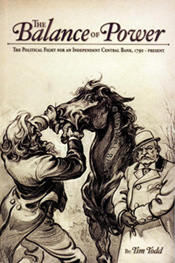 The Balance of Power, for all its brevity (about 80 pages of text and notes), is really two books in one: The first (about 50 pages) describes the history of the Federal Reserve, especially as it relates to the Fed’s political independence; the second includes a speech by Kansas City Fed President Thomas Hoenig and an analysis of the purpose of the Federal Open Market Committee (FOMC), both intended to make the case for the continued independence of the Federal Reserve System and its regional banks. The Balance of Power, in other words, is more than just a piece of descriptive history, it is also meant to convince the reader that monetary policy is best made by a politically independent (though accountable) central bank.
The Balance of Power, for all its brevity (about 80 pages of text and notes), is really two books in one: The first (about 50 pages) describes the history of the Federal Reserve, especially as it relates to the Fed’s political independence; the second includes a speech by Kansas City Fed President Thomas Hoenig and an analysis of the purpose of the Federal Open Market Committee (FOMC), both intended to make the case for the continued independence of the Federal Reserve System and its regional banks. The Balance of Power, in other words, is more than just a piece of descriptive history, it is also meant to convince the reader that monetary policy is best made by a politically independent (though accountable) central bank.
Of course, that a Federal Reserve publication would support Fed independence won’t come as a shock to readers, and that a Federal Reserve bank would argue for the continued relevance and importance of the Fed’s 12-bank system will come as no surprise either. However, readers should not dismiss this book just because it has a point of view. Todd has carefully separated the historic overview from the POV material, and readers with little understanding of Fed history will benefit greatly from the book’s topical highlights. Even readers with strong doubts about Fed independence will enjoy grappling with Hoenig’s arguments and Todd’s analysis. In other words, this book is no polemic, but a straightforward attempt to address the suddenly relevant topic of Federal Reserve independence. As Hoenig notes in his contribution:
[The Federal Reserve System] was designed to assure broad input to decisions and to provide a mechanism to build national policy consensus across broad regional, economic and cultural differences. And it was designed as a public-private partnership, accountable to, and yet independent of, the government. To miss these connections is to incorrectly tie the Federal Reserve’s structure to its processing activities rather than to its efforts of assuring trust in the institution.
“Broad input” … “public-private” … “assuring trust”—three key concepts that hark back to the founding of the Federal Reserve, and indeed to the founding of the United States. And that’s where Todd begins his story, with a description of the battle between Hamilton and Jefferson and the creation of the First Bank of the United States, followed by the struggle between Andrew Jackson and Nicholas Biddle with the Second Bank. (The Region recently published two articles on the First and Second Banks of the United States.) You can detect a pattern already—central banking, and banking in general, has been a point of contention for U.S. policymakers since the country’s beginning, so don’t be surprised to see congressional leaders, Treasury secretaries, CEOs of giant banking companies and others still duking it out on this subject.
That political sparring was evident right through the creation of the Federal Reserve Act, as Todd well describes. Following the Panic of 1907, the latest in a series of financial crises that had challenged the U.S. economy since the Civil War, Congress decided it was time to strengthen the nation’s banking system. Six years later, following hours and hours of testimony and pages and pages of proposed legislation, Woodrow Wilson signed the Federal Reserve Act into law, and a year later, in November 1914, the Federal Reserve banks were up and running.
But what had Congress created? Todd cites the historian Robert Craig West on the seeming dual nature of the Federal Reserve Act, with House members believing they had formed a decentralized banking system and the Senate convinced that the new Fed was a central bank. “Those competing interpretations,” Todd writes, “would be at the core of numerous battles in the years to come.”
Todd does a nice job of describing those ensuing battles, including two key skirmishes that reshaped and redefined the Federal Reserve’s role: The 1935 Banking Act and the Treasury Accord of 1951. Marriner Eccles, who became chairman of the Fed in 1934, hoped to decisively resolve the matter of centralization by placing language in the 1935 bill that would firmly place control with the Federal Reserve Board (as the Board of Governors was then known) in Washington. (Two years earlier, Congress had passed a law creating the FOMC with all 12 banks as members and stipulating that the Board could not initiate open market operations but only approve or reject bank proposals. The law also preserved the Treasury secretary’s position on the Board.) After much behind-the-scenes work by Eccles to craft a bill giving more power to the Board, and with equal effort by Sen. Carter Glass to keep power diffused among the Board and the banks, the eventual bill finally gave shape to the Fed of today, including the following provisions:
- Turning the Federal Reserve Board into the Board of Governors.
- Creating the office of president within the 12 Reserve banks.
- Establishing open market operations as the purview of the seven-member Board of Governors and five rotating Reserve bank presidents. The FOMC was constituted of those 12, plus the other seven presidents as nonvoting members.
- Removing the Treasury secretary from the Board.
While Glass could take comfort in preserving some power in the Federal Reserve banks, the Banking Act of 1935 gave the Board majority control over monetary affairs as well as authority to review and approve many bank operations, and the result was that the Federal Reserve could finally and truly be called a central bank. Although tensions would continue between the Board and the 12 Reserve banks following the Banking Act of 1935, many of the fundamental structural issues left unresolved in the original Federal Reserve Act were settled. Still, the key one was left unresolved: Who was really in control of making monetary policy—the newly established FOMC or the Treasury Department?
As he does throughout his book, Todd tells this part of the story—which culminates in the Treasury Accord of 1951—with all the facts and just enough anecdotes to keep an otherwise wonky subject interesting. As Todd notes, despite the removal of the Treasury secretary from the Board in 1935, the Board “still remained subservient to the Treasury in many ways. … Notably, the Fed implemented policies through the war and post-war years supporting the prices of long-term debt, thereby helping to finance government spending.” This was ground zero of monetary policymaking and recalls the exchange cited above between Bernanke and his congressional interlocutor—will the Fed monetize government debt?
By 1949 the Fed, in the person of Chairman Thomas McCabe, had had enough. He announced that the Fed would “conduct open market operations with a primary regard to business conditions,” Todd writes, and not to Treasury’s possible desires, as an arm of the administration beholden to presidential will, to inflate away the national debt. This was the first shot fired in a battle between the Fed and the Treasury (including President Truman) that would loom large in Congress and even inflame journalists across the country. One Los Angeles Times columnist suggested that Truman study the history of the Federal Reserve to better understand the reason for its unique structure: “All this was to protect (the Federal Reserve) utterly and irrevocably from political control.” The Washington Post compared Truman to Andrew Jackson and told readers that Jackson’s opposition to the Second Bank was the cause of serious financial panics in following years.
Long story short, by March 1951 the Federal Reserve and Treasury had resolved their differences such that the Federal Reserve could—finally—conduct monetary policy without the approval of Treasury. Their Accord, as it came to be known, read in part: “The Treasury and the Federal Reserve System have reached full accord with respect to debt management and monetary policies to be pursued in furthering their common purpose to assure the successful financing of the government’s requirements and, at the same time, to minimize the monetization of the public debt.” (For more on the Accord, see the September 1998 and the June 1999 issues of The Region. See also a special report by the Richmond Fed.)
Todd’s story does not end there. No sooner had this problem been seemingly resolved than members of Congress started in again with debate about Federal Reserve independence and the political pressures placed on the Fed by presidents and members of Congress. And the debate has continued in every decade since, including the present one. In a bit of historical irony that stretches all the way back to the 1930s, Todd notes that Congress and others have renewed concerns about the relationship between Treasury and the Federal Reserve following the close partnership the two agencies formed to address the Great Panic of 2007–09. So it appears that these issues, which were supposedly set to rest decades ago, remain unresolved, and fundamental questions remain about the role and purpose of the nation’s central bank.
Translation: Whatever it takes to avoid another Great Depression
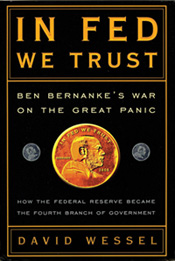
The Great Panic is a good segue to In Fed We Trust, since Wessel applies the phrase right on the cover to describe the current (and hopefully receding) mess. Wessel’s technique is to relate the facts of the case, along with inside anecdotes and analysis that a reporter of his experience and resourcefulness can bring to bear, in a “you are there” dramatization that makes an otherwise dry subject compelling. This means that readers who know little about the Fed and its role in the Great Panic, or of the Great Panic in general, will learn much from this book and will stay awake doing so. It also means that knowledgeable readers will discover a great many insights that will help fill in the gaps. (And before I proceed, a disclaimer: David Wessel has long maintained a professional relationship with the Board of Governors and the Reserve banks, including the Federal Reserve Bank of Minneapolis, and also with certain members of those institutions, including this reviewer.)
For those who need to bone up on Fed background, Wessel includes an entire chapter on the history of the Fed. However, to his credit Wessel does not merely retell this history, but connects past events to the present situation in a way that reminds readers how history informs understanding of current events. One example:
“The whole world is united in agreement that we have about the worst system of banking that there is anywhere in existence,” Frank Vanderlip, then president of National City Bank, forerunner of today’s Citibank, said in 1911. “It makes of us … an international nuisance.” A century later, Hank Paulson would look at the archaic maze of regulatory agencies in his own time and come to a similar conclusion.
This history is certainly important, but most readers will buy Wessel’s book for insights into the present-day FOMC and how it works, and they won’t be disappointed. Wessel tells stories about committee members and the actual meetings that can only come from solid reporting, writing about events that will never appear in FOMC transcripts.
Readers learn, for example, that during the Sept. 16, 2008, FOMC meeting—the very time when the Board of Governors and the New York Fed were neck-deep in the AIG affair—the FOMC as a whole was not kept abreast of any real details pertaining to AIG during the meeting itself. Instead, the full FOMC was supposed to get a report during the lunch that followed the meeting; however, events spun out of control, and the lunch meeting was canceled when the governors quickly convened without the bank presidents to deal with AIG. Things were happening so fast, in other words, that there wasn’t even time to brief the full FOMC over a cold sandwich. So the presidents were “abandoned,” writes Wessel, “and wandered off to cars and airports with little idea of what was going on in Bernanke’s office just a few steps away.” This recalls the bipolar nature of Fed governance over the years, with Washington and the New York Fed asserting one locus of power and bank presidents another.
This is more than just a dramatic anecdote meant to put a charge in the story’s narrative flow; rather, it brings to bear the matter of how the Federal Reserve made all the decisions it made over the past two years. The issue of what the Fed did—instituting new lending programs, reviving Section 13(3) powers and so on—is a matter of well-documented fact. Wessel does a nice job of recounting the story of subprime meltdown through Bear Stearns, Lehman, the GSEs and so on that gave rise to the Fed’s extraordinary interventions. But how the Fed did these things—by what authority—is more interesting and still has resonance with Congress and others. And this is where a book like Wessel’s has particular value.
Wessel employs a clever device to guide the reader through the maze of financial complexities. Whenever he cites an official statement or published piece that is a bit too technical or otherwise obscure, he follows with the word “Translation” and immediately recasts the words into “normal” lingo. Parsing a Timothy Geithner passage from 2005 (when Geithner was still president of the New York Fed), Wessel interjects with seven such bracketed translations, including the following:
“… and a large increase in the share of global savings that is willing to move across borders [Translation: the huge sums of money sloshing around the world economy], have worked together to bring risk premia down across many asset prices [Translation: all of which have led prices of stocks and other assets to rise awfully high].”
His bottom line, but only if you could understand him: don’t invest as if these unusually good times will last forever.
The following passage also gives a sense of Wessel’s writing style, which is not only readable in the tradition of good journalism, but also knowing and with a bit of an edge:
Theater and substance wound around each other. At moments of panic, the financial system acts less like the automobile engine of the favorite metaphor and more like a collection of worried people, with emotions and trust that wax and wane. …
… The substance: the Fed belatedly acknowledged that a weakening economy meant that it would cut the interest rate that mattered most, the federal funds rate. The theater: the Fed was shouting that it was eager to lend to cash-short banks through the discount window.
[From a later chapter] … Paulson had, again, messed up the theater, the managing of expectations and the appearance of calm, reasoned policies that are essential ingredients at a moment of wide-spread anxiety and panic.
In addition to revealing his style, these passages show that Wessel is willing to pass judgment and that he doesn’t flinch at providing his own analysis and commentary. This is evident throughout the book. For example, Wessel says that certain Fed tactics were a “flop,” that a particular Paulson ad lib was a “mistake” (he is tough on Paulson throughout the book) and that the FOMC resembles a high school made up of “the cool guys, the jocks and the geeks.” But he saves his harshest criticism of the Fed for the end: “Bear Stearns was a shock to the Fed, and helping JPMorgan Chase buy the failing investment bank was prudent. But the Fed’s response immediately afterward was flawed.” He then describes how neither Bernanke, Geithner nor Paulson had an adequate game plan for what was to follow; had they been better prepared, he maintains, a better outcome could likely have been achieved. But instead, he concludes, “They made mistakes of substance and mistakes of communication.” This is not a rash assessment, nor is Wessel alone in voicing it—many critics have made similar comments about the Fed’s readiness and response. But will these criticisms hold over time?
Regardless, this is quarterbacking the “what if” game, as Wessel calls it: What if they had done this or done that? This is easy to do after the fact, but how helpful is that game? Besides, as Wessel notes, you can play the game from the other side of the field: What if Bernanke had not done what he did—maybe the U.S. economy really would have experienced a Great Depression. (For more on this topic see the Minneapolis Fed’s 2008 Annual Report, “What Should We Learn From the Great Depressions of the 20th Century?” and related material.) That has certainly been Bernanke’s reply to critics of the Fed’s actions over the past two years, made on numerous occasions—before Congress, on “60 Minutes” and on the “Lehrer NewsHour.” And Bernanke’s counterfactual is as valid as Wessel’s, as the author himself suggests.
Speaking of the “Lehrer NewsHour,” Bernanke was asked at one point during the late July 2009 broadcast whether he agrees that the Fed had become a “fourth branch of government,” a query likely inspired by Wessel’s book. The chairman’s response was emphatic:
That’s a tremendous exaggeration. As I said, the Fed needs independence in making monetary policy, and that’s good for everybody because it helps keep inflation low. But we are very accountable. We have to report regularly and frequently to the Congress. I was—just this last week I had to testify—maybe you saw me on television—I had to testify before both the House and the Senate explaining our policies, what we’re doing, and reporting to the Congress and the American people about our ideas, our decisions, and how they affect the economy.
And again, we are subject to the appointment process, and Congress can change the rules as well. So it’s not a constitutional type situation. It’s one where our independence has to be won every day, if you will, in that we have to show that we are producing good results and doing so without intervention or interference from other political bodies.
So, it all comes back to independence, and that age-old question that has framed debate about the Federal Reserve since its founding. And it is on the topic of Fed independence where Wessel has made his most important contribution. In shining a light on the Federal Reserve’s actions during the Great Panic, he illuminates the importance of Federal Reserve independence (how else could the central bank have reacted so swiftly and with such conviction?) while challenging some of the Fed’s measures and thus eliciting concern about that very independence. And many of these issues are, as yet, unresolved. Some will be addressed by Congress in coming months, and some will simply answer themselves as policymakers look back and review how and why the events of the Great Panic occurred. That’s how institutions get smarter and evolve.
Wessel could have titled his book Whatever It Takes, as it is a central theme and phrase employed throughout the book to describe the motivation of Bernanke, Paulson and Geithner, among others, as they labored under tight deadlines and mounting stress to prevent what they believed was a pending depression to rival the great one of the 1930s. Time will tell whether they were right. Or maybe it won’t. After all, economists and historians are still arguing about the causes and consequences of the Great Depression. They simply will never have the counterfactual and so will likely go on telling stories about the Great Panic for many years. In Fed We Trust is a solid first crack at that story, especially with its focus through a Federal Reserve lens. But as Wessel well knows, this story is far from finished; the next installment will likely be recounted in his paperback edition.
Independent Thoughts
Diverse views on Fed independence from the Region archives
Region: Here’s a question on Fed independence and the role of district bank presidents. Do you think the bank presidents should be appointed by the president of the United States?
Volcker: I think the Federal Reserve is strengthened by the fact it has this regional structure and the bank presidents participate in monetary policy and other decisions. I think you would lose some of the sense of independence, frankly, if the president appointed the bank presidents as he appoints members of the Board of Governors. You might not lose it entirely, but certainly to some extent the tradition would be weakened. So I’d rather it stay as it is. … I have wondered many times whether there’s any other way of doing it, but I haven’t come up with a better system. But if the present arrangements are to be sustained, it’s very important that that responsibility, as other responsibilities at the regional level, be conducted in a way that doesn’t raise any questions about integrity, probity or political influence.
Paul Volcker
Region interview
December 1992
Somebody ought to write about this, how central banks became so important in the public mind and in their own mind in the past 10 years or so. Independence of central banking became part of the approach in almost every country. And I think you can make a case that it’s been a little overdone, that central banks suffer from hubris, like everybody else.
Paul Volcker
Region interview
September 2009
Region: Should the current structure and independent status of the Federal Reserve be maintained, or should it be modified to give Congress more control?
Stigler: I’m not sure how independent it is at present. I assume that because of the appointing power alone, the president has some contemporary influence on the composition of the board. However, if he reappoints, he often is compelled by the statement that it will disturb the international situation not to reappoint the chairman. I assume that was why Volcker was reappointed once. So, I don’t think the independence is complete. It’s barely conceivable that in an organization which could be eliminated by an act of Congress, not that it would be an easy act to pass, that you could have an insulation of the measure of, say, the Supreme Court.
The behavior of the Congress seems to be much more motivated by special and particular interests than is the president. He has a much bigger constituency and, therefore, I don’t really want to see their influence any larger than it is now where they demand that Mr. Greenspan appear frequently to explain what he’s just done.
George Stigler
Region interview
May 1989
The empirical evidence that, on average, countries with more independent central banks have lower inflation, at no cost in terms of growth or the variability of growth, is persuasive. Of course, it is possible to have low inflation without an independent central bank. Nevertheless, the evidence is that a country is more likely to have low inflation if the central bank is independent, and there are good reasons to expect that outcome when the fiscal authority is not highly disciplined.
Stanley Fischer
Region article
June 1997
I believe it deserves stressing that the role of the Federal Reserve as an independent regulator has been preserved. It is my view that if you take political science in the 20th century, the greatest institutional model contributed by America was the decision made by Congress in 1913 to establish an independent Federal Reserve. That decision has made this country stronger and contributed significantly to global economic stability. The role of the Fed in regulation, as opposed to monetary policy, can in theoretical terms always be challenged, as it has been on the Continent. On the other hand, one of the aspects of the Fed that I appreciate is a professionalism and an independence that has served the country well. We change institutional balances at great risk, particularly if change includes a greater prospect of politicizing regulation.
Then-Rep. James Leach, R-Iowa, Chairman, House Banking Committee
Region interview
March 2000
Region: Related to the pursuit of good monetary policy is the need for an independent central bank. How important is this independence?
Stiglitz: I think the econometric evidence on that is some-what ambiguous. There’s not a lot of evidence that it improves the trade-offs in a significant way. I think there are some deep philosophical issues on whether, or the extent to which, macro-economic policies which are a fundamental responsibility of central banks should be delegated to nonelected officials. Now, there are arguments against putting macro-economic policy in the heat of the fray. And so the question is arriving at this balance between independence and accountability; it seems to be a question a democratic society has to address. People should be aware of the balance in principle. We should not, for instance, allow authority to be delegated to a group of people whose only focus are bankers. Bankers’ concern is inflation. That may have a very disastrous consequence for working people. That, I think, would be a mistake.
Joseph E. Stiglitz
Region interview
September 1997
Nowadays central bank independence has been widely adopted around the world, and the main threat to the institution is its own success. Politicians increasingly look at how successful central banks have been and say, “Well, gee, why don’t we have them do everything? Why don’t we have them run regulation? We wish they could run fiscal policy. Why don’t we have them deliver the mail?” There’s this incredible tendency to try to say that since the Fed does things really well, why don’t we have it do everything?
As the Fed is pushed to play a larger role in regulation, in particular, it is going to be harder to maintain its indepen-
dence. If the Fed is going to be making decisions on individual banks, senators and representatives will call up and lobby shamelessly. It is not so easy to defray that.Kenneth Rogoff
Region interview
December 2008
Tobin: I also suggested that we go back to the practice, as before 1933, of having the Secretary of the Treasury on the Board [of Governors], and I would add the Chairman of the Council of Economic Advisers.
Region: You would put the Treasury Secretary back on?
Tobin: Put him back on and the Chairman of the Council, too. Put them on, at least, for being present, even if they don’t have votes. I’m not trying to do anything drastic, I just think the present system is too anti-democratic.
Region: Some might argue that such moves would too closely link the Fed and the White House, that it would politicize monetary policy.
Tobin: Well, you see, it’s not just a technical question. It’s not as if monetary policy is nonpolitical. Monetary policy is politics. The judgments, the trade-offs involved during the 1979–1980 policies, for example, or during any deep recession, are not just technical matters. The president is blamed and credited for what happens to the economy, but what happens is not done by him. Clinton is the beneficiary of Greenspan’s success, but he might have been the victim of Greenspan’s failures in policy. But either way he, perhaps, should have a little more to say about what goes on—as the president used to have. It used to be that the chairman of the Fed resigned when a new president came in. No longer.
James Tobin
Region interview
December 1996
In the 1950s and the 1960s, politicians are suddenly very interested in what the Fed does because employment is something that they know about. They now understand much better than they did before that this institution has something to do with the jobs that are created for constituents. And it also has something to do with inflation, which constituents don’t like. And it also has something to do with interest rates, and high interest rates are not something that constituents like very much. So they suddenly became very interested. And the increased number of hearings shows that congressional interest rose, and White House interest grew significantly also.
Woodrow Wilson wouldn’t invite members of the Federal Reserve Board to parties at the White House because he didn’t want to influence them. Franklin Roosevelt was at the other extreme. … Now we have regular meetings between the president and his economic advisers like the secretary of the Treasury and the chairman of the Federal Reserve. The political relationship between the Fed and the White House became very different in the ’50s and even more in the ’60s. Lyndon Johnson was not a man who cared much about the niceties of structural relationships. He wanted what he wanted today. That becomes a very different milieu for an independent agency. And the meaning of independence under those circumstances changes.Alan Meltzer
Region interview
September 2003
Endnote
1 Monetizing debt refers to a central bank financing government expenditure by buying government bonds (debt) through issue of new currency (monetization). Other things equal, this lowers the value of each unit of currency—that is, it creates inflation. For some politicians, generating inflation may be more palatable than increasing taxes or cutting public expenditures, but for a (politically independent) central banker devoted to price stability, it’s anathema.
Related Content
Related Content


